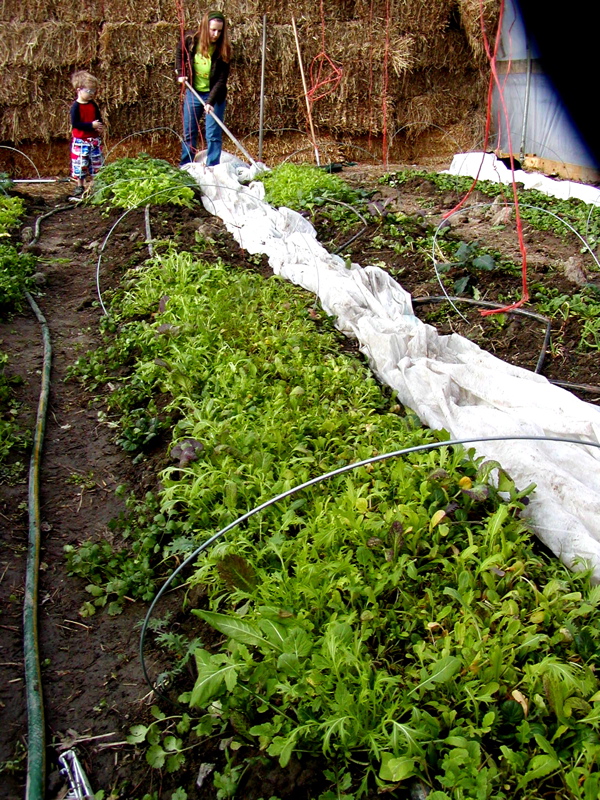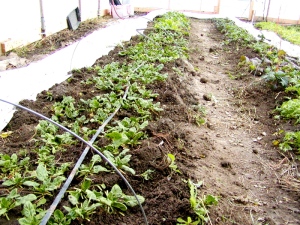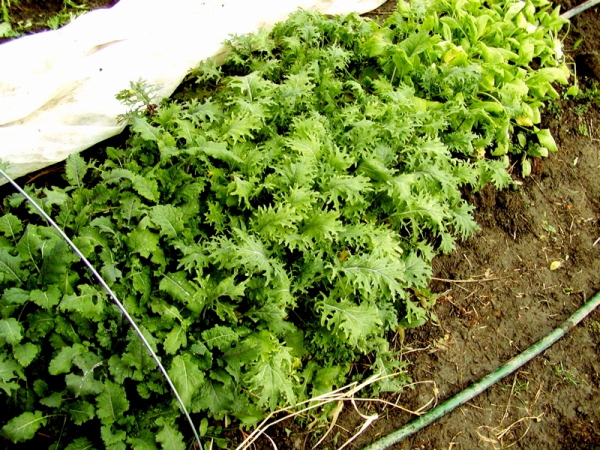The whole idea of keeping vegetables of any kind alive all winter in central Indiana without supplemental heat when it’s below zero outside may seem a little crazy.. but what’s starting to seem crazy now is leaving the greenhouse empty in the winter! Take a look inside of our hoophouse, as of today.

Spinach, kale, lettuces, arugula, chard, cilantro, and a few assorted mustard greens are growing right now. We’re standing in front of a hay bale wall. Later on in the spring, we’ll pull down the bales to build tables for our seed starting flats.
Between the rows, that white stuff is polyester row cover. We put two layers of it on the wire hoops over the rows. Sometimes we use old greenhouse plastic instead, which is stiffer. Greenhouse plastic handles better when frozen and/or wet, but we don’t have enough of it yet for all of the beds.
Watering is kind of a hassle, but we don’t have to water very often during the winter. We have an outdoor spigot about 100 feet away from the hoophouse. When there’s a sunny day above freezing, we haul a hose out to the spigot, hook it up, uncover the greens, and do the watering. Then we unhook the hose, haul all the hose back into the hoophouse, and let the leaves dry off before covering the plants back up. We try to water every 10 days or so. The plants stay pretty moist with the two layers of row cover on.
With this arrangement, the limiting factor in growing greens becomes day length. Right now, in early January, days are very short and everything is growing very slowly. Greens grown for cut & come again use just don’t grow back very fast. We’re planning to put up a second hoophouse during the 2011 growing season that is twice as long, so that we can have more greens and other items available throughout the fall & winter.
There are definite limits on what can be grown this way- notice that we are growing cold-tolerant leafy greens. We had radishes and salad turnips in the beds earlier, which also did well. Certainly nothing is in the beds that can’t handle a frost.
Spinach anyone? It gets sweeter after every cold spell. The sugars are a natural form of antifreeze.
However, kale is what will really get you to live forever.







No comments:
Post a Comment